Best Dehydrators for Food Storage
Do you wonder what the best dehydrator is? Here are some tips to help you make the decision easier to buy a dehydrator the first time.
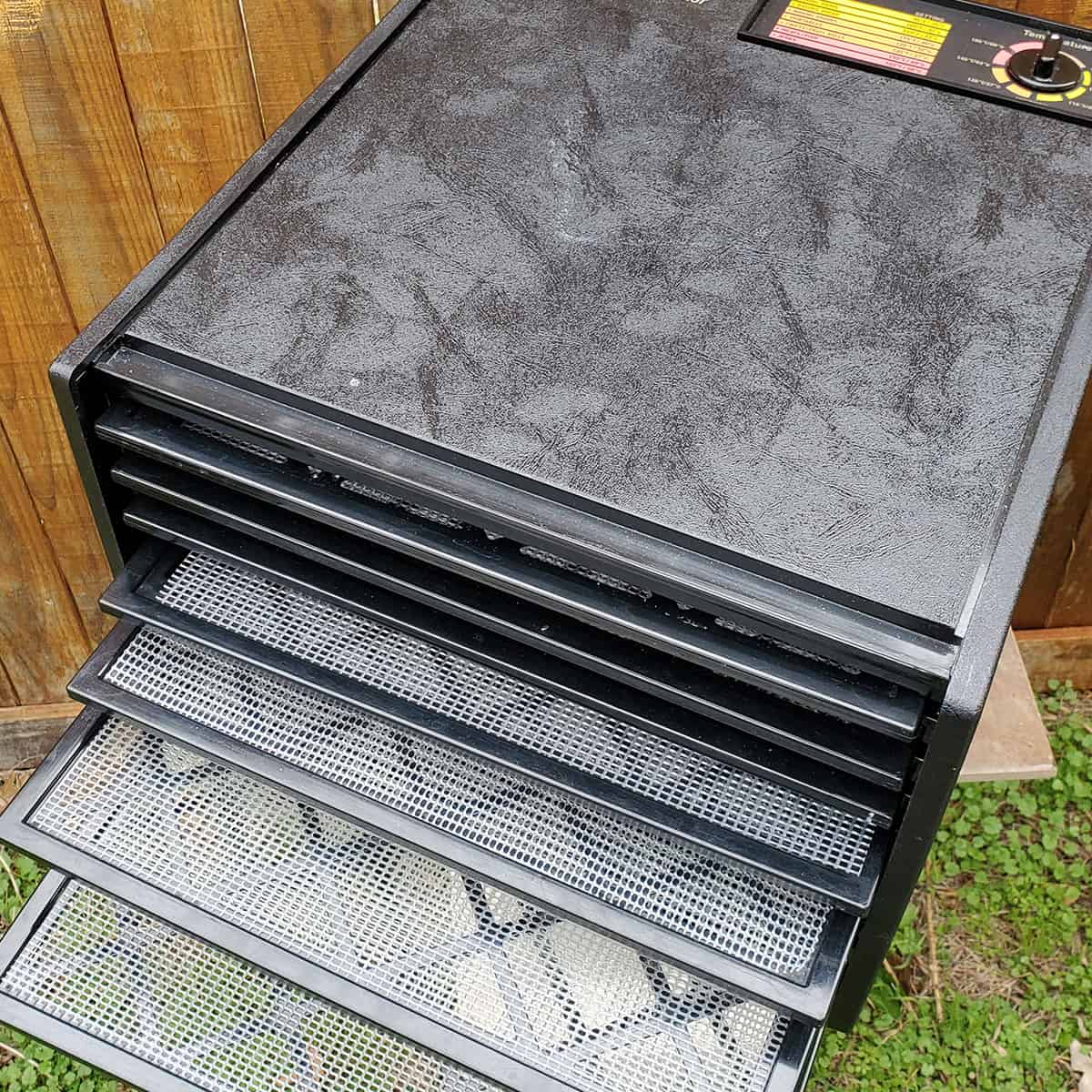
Before jumping into the first dehydrator, do a little research – you’ll save yourself a lot of time, frustration, and hopefully a lot of money!
Tips for Buying Your First Dehydrator
Here are some good rules of thumb for purchasing a dehydrator:
Budget
Your budget will be the biggest factor in determining what kind of dehydrator you get.
The price ranges I’ll be talking about are under $50 (small budget), $50-100 (mid-range budget), and $100+ (large budget).
Of course, there are some good machines in the lower price ranges. But saving a few more dollars can get you a great machine that will do so much more for you.
But remember…the worst dehydrator is the one you don’t get or don’t use. You do not have to have a big fancy machine to put up amazing produce for your family for long-term food storage!
Don’t be caught up in the need for the biggest and most expensive machine. Be wise with your money – that’s more important!
Temperature Adjustment
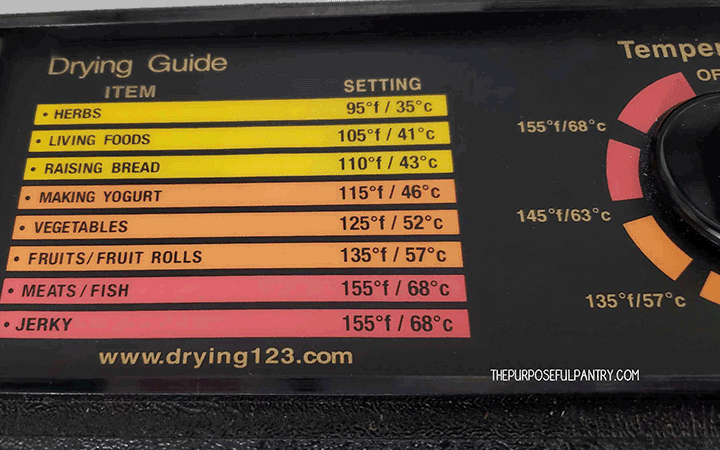
Temperature adjustment is a vital feature of a dehydrator. It allows you to change the temperature for delicate greens, raw foods, all the way to a high enough temperature to make beef jerky safe.
Machines that have a simple on and off switch are usually a single-temperature machine. They are a fixed temperature that may or may not be safe enough to do jerky, so read the manual to find what the fixed temperature is. If you already have a single temp machine you can test your dehydrator to find what its true temperature is.
Machines that have an off, low, medium, and high button tend to stay within the range of the recommended temperatures. You can easily look at their manual online by downloading a .pdf from a quick internet search of the model name and .pdf manual.
Wattage
Get the most you can afford. A 250-watt machine will take too long to dry those things that need longer drying times. It wastes energy and costs you more in electrical costs in the long run. Wattage varies per machine, so make sure to compare wattage as well as price and settle in the space you can afford.
Electrical use: Of course, more wattage means more initial electricity usage, but you’ll have to balance that with a lower wattage machine having to run longer for the same results.
You can always get an idea of how to figure electrical use of your dehydrator with this handy guide.
Space
Know the space you have to store your dehydrator when in use and out of use.
Look not only on where you’ll use it, but also where you’ll store it when not in use. Do you have a spot in the garage you can tuck it? Or a closet where it can stay during those seasons that you’re not using it?
It’s well known in my dehydrating community that I store and use my Excalibur on my dryer in my laundry closet. It’s the only place that I can keep it where it is handy. I use it so often that I want to keep it handy, but I can’t afford the counter space because my kitchen is on the small side.
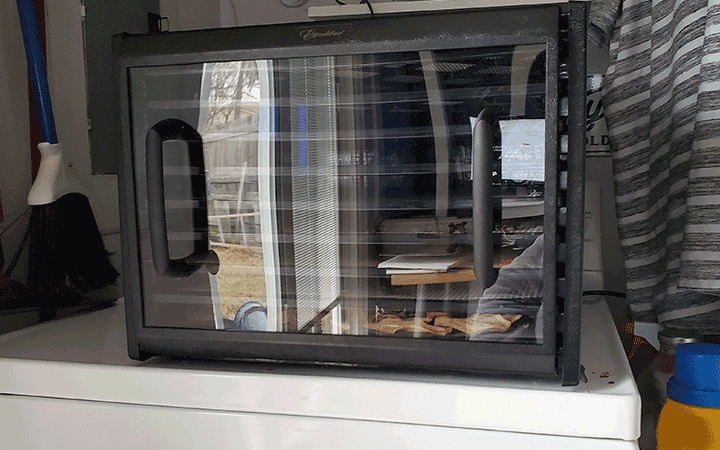
Trays
Skip the 4 or 5 tray machines that you can’t add to. You’ll lose half those while doing anything like greens as you have to make room. Go for expandable vertical trays or 7+ tray horizontal machines.
Also, think in terms of the trays for the above fan configurations. Trays from vertical fans all have holes in the middle to allow for airflow, which then decreases the amount of space to put produce on.
Construction
One way that the inexpensive machines keep the cost down is to cut back on materials used. The trays are done from a flimsy plastic that can be broken easily when handling the trays. It’s usually a clear polycarbonate that will be quite fragile.
Another downside to an inexpensive machine (the under $40 range) is that many of them will have trays that warp from heat.
You want a machine with trays that are made from sturdy plastic or stainless steel, that don’t feel they’ll crack at the slightest touch.
Stainless vs Plastic – this is a personal preference. The plastics used in most modern dehydrators are BPA-free, but you’ll want to do due diligence to read the manufacturer specifics on any machine you want to use. Be sure to look at not only the cabinet construction but the tray construction when making your decision.
A word about California’s Proposition 65. In California, a warning label must be placed on any device that MAY contains one of over 900 chemicals in the manufacturing process that may contribute to cancer. While a machine (such as Excalibur) may meet all federal and state safety standards, it is a label that California requires, regardless if the said machine actually does contain those substances. You can read more about it on Excalibur’s website.
Machine Fan
There are two fan type:
Horizontal Fan – works from front to back across all trays. Think of the slide-in tray machines like the Excalibur.
- Pros: the airflow affects all trays at the same time across the food. Full use of the tray. This is the most efficient form of dehydrating.
- Cons: rotation may still be needed for long-drying times with fruits as airflow still concentrates mostly in the middle trays at the back of the machine. Tend to be more expensive and larger.
Vertical Fan – stackable trays with a fan on the top unit or the bottom base unit. There is usually an open channel for upflow created with center holes in each tray.
- Pros – many of these can be stacked with additional trays to expand your drying.
- Cons – not as efficient as the horizontal trays and need to be rotated during use. Each tray has a hole in the middle to help with airflow, reducing how much you can get on a tray
Ultimately, a good machine that has a strong motor will work for you, regardless. I personally prefer the horizontal fan now that I’ve used both kinds, as I feel it is a more efficient machine, but your budget might play a larger factor for you and a vertical fan will work just fine!
With the motor comes issues of sound. Learn just how loud a dehydrator can be with this handy guide on dehydrator noise.
Reviews
Don’t skip the 5-star and 1-star reviews, especially if they are the majority, but focus on those middle reviews. They tell a better story about the pros and cons of a dehydrator than raving reviews or bad reviews.
Also, ask your friends, or people in your favorite food preserving Facebook groups about what they use and how they like it. Those can be a great way to get real-life reviews from people who are using their dehydrators all of the time.
I also tend to stay away from dehydrator review sites. They’re usually marketing sites that are set up specifically to get your affiliate marketing money and nothing more. Most of the time, the owners don’t even dehydrate! They’re convenient for specs, but I prefer real-world reviews by people who actually use the machines.
Shop for Sales
Look around for a good deal on the dehydrator you want.
- Shop thrift stores and charity shops
- Scour garage sales
- Ask friends if they have one they never use any longer
- Facebook Marketplace
- Check the manufacturer’s websites, or get on their newsletters to be reminded of sales and coupons.
- Look for Lightning Deals on Amazon or Woot! These tend to be refurbished or returned models, but are usually certified and hold the same warranty.
- Check out box store sales especially around seasonal buying time
- Amazon’s Warehouse might be a great place to check, too!
Other tips for Buying Used
- Borrow from a friend – this can be one of the best ways to try out a dehydrator that you’ve been looking at to see if it will work for you!
- Test a machine – if you are looking at a used machine, ask to plug it in first to see if it actually heats up. Pull out an oven thermometer if you have one handy (because you always carry one in your pocket, don’t you?!) and test the temperature in the machine while it runs.
- Look for the manual online – you can read and make yourself familiar with how the machine works, and discount it immediately if it won’t suit your needs.
- Ask for an honest review – ask why the person is selling it, if they ever used it, how it’s been stored, how much it’s been used.
The Best Dehydrators
These are some of the best dehydrators on the market. I’ve used many of them, but not all.
My recommendations here are based on my own experience or the collected reviews of machines from my dehydrating community.
Under $50
- Presto 06300 (600 watts) While this machine doesn’t tick all the boxes of what I consider a great machine, if you’re tight on budget, and don’t mind that it only has one temperature, this is a good, solid starter machine. But my recommendation is to save a little longer and upgrade your purchase. One temperature isn’t great for doing herbs or other delicate foods. Another issue it has is that the fan is on the bottom and things can drip, burning on to the heating element and stinking.
- Magic Mill Stackable (250 watts) While this is a very low wattage machine that will take about twice as long to dry things as recommended. However, it does allow you to change the temperature that matches the food you’re drying.
Between $50-$100
- Nesco FD-75 (The “Round” one — 600 watts). I use this one now as an overflow machine. The trays can be finicky, and the top-down fan doesn’t work as efficiently as a horizontal fan, but it’s a good solid machine.
- Nesco FD-80A (The ‘Square’ one — 700 watts)- I used this machine for years and love how sturdy it is and what a workhorse it is. It doesn’t get anywhere near as much love as the rest of the dehydrators in this section, but it’s my favorite of them.
- Presto Dehydro
Between $100-$170
- Magic Mill 7 Tray (600 watts) Absolutely quiet, small enough to fit in most spaces, and a great machine! It has been my number-one recommendation for a few years.
- Canadian Equivalent – Ivation is an equivalent
- Australian Equivalent – Devanti
- Nesco Gardenmaster 075 (1000 watts). This machine is expandable up to 30 trays, is a taskmaster, and is well worth the investment!
- Nesco FD-7SSD (600 watts) – a 7-tray stainless steel dehydrator cabinet style. I love this machine works really well as I show in my review of the new Nesco.
- LEM Bite series (800 watts) Stainless steel trays, a brand that has been around for a very long time but isn’t as well known. They are also available through Home Depot.
- Colzer 8 tray — it is on sale often on Amazon, so look for it.
Between $170-250
- Excalibur 3900B 9-tray – this is one of the economy models that now only go to 105°F – and since most of their machines except the highest priced ones are also set only as low as 105°F, there’s no use spending more just for the timer.
- Excalibur Performance Series 6-tray (Black Stainless Steel — 700 watts). This machine comes with an oven front door, 15×15 trays, and a window on top that lets you see how your food is drying. It’s a great feature so that you never have to open the door to check! 85°F to 165°F with an 80-hour timer. It’s been a great machine. I’ve been using it pretty exclusively for a while, and absolutely love it.
- LEM Products 1154 (Stainless Steel — 700 watts) However, the machine run is tied into the timer, which you’ll have to start over after 30 hrs. for things that may take more time drying like whole blueberries or bananas. Presets can be changed to run longer.
- Avantco Stainless Steel Dehydrator— 1,000 watts – This machine is available only at Webrestaurantstore.com.
- Colzer 12 Tray 1,000 watts – 68°F to 194°F
- Magic Mill 11 Tray (1,000 watts) – the only thing to remember with these is that they have a 24 hour timer and it needs 2 hours to rest before resetting.
- Magic Mill 10 Tray (600 watts)
Over $250
- Excalibur 3948CBD (600 watts) – The Excalibur comes with a digital display, timer, and a temperature range of 95°F/165°F (35°C to 70°C). Get it at Excalibur or Amazon).
- Broad & Taylor’s Saraha Folding Dehydrator – great for storing in small spaces, RVs, and campers! Temperature from 086° to 165°F (30°C to 70°C), (along with a handy air-only feature that is perfect for herbs or art projects). Folds up to tuck away when not in use. You can see how it works in my review video.
Best Dehydrators over $400
• Cabela’s 160L (24 tray) Dehydrator– the machine for serious dehydrating! If you have a large garden or homestead or want to begin your own farmstand business – this is the way to go!
• Weston Pro – available from Home Depot, 24 trays with a lighted cabinet.
Best Dehydrator for Rv’s and Small Spaces
If you live in a tiny space, such as a small apartment, RV, trailer, or tiny house, give the Nesco FD 41B a look. It is a super compact 4 tray, cabinet-style, 400-watt machine that can be tucked away. It’s the size of an air fryer, so easy to tuck into a cabinet or on a shelf when not in use.
It has some drawbacks in the lower wattage and trays that don’t quite sit solidly in the slides, but its compact size may make all the difference for those of you who don’t have space for a bigger machine.
DIY Dehydrator
Of course, if you are a fan of DIY and want to go off-grid, you can always build a solar dehydrator!
And if you can’t afford one – use your oven to dehydrate!
Note about Cosori Dehydrators
I loved my Cosori – it’s one of the quietest machines on the market. However, after they were overproducing the machine, more and more reports came out (and then it happened to me) of the thermostat breaking and overheating to the point of being able to catch fire. There were also many reports of it just dying. Cosori’s customer service is great if you can get them to respond, and they will replace the machine if it’s under warranty, but you may have to jump through a few hoops to get there. I no longer recommend this as a reliable machine.
Frequently Asked Questions
You sure can! Many models have downloadable instruction manuals for dehydrators that are available to save or print.
And now that you’ve chosen your dehydrator…how about some real information on what tools you need and don’t need.
What essential dehydrating tools do you really need?
What Do You Use and Love?
What’s your recommendation for a dehydrator someone might like to have? Do you have questions about any of the above dehydrators? Post in the comments below to let me know what you think about your favorite dehydrator!


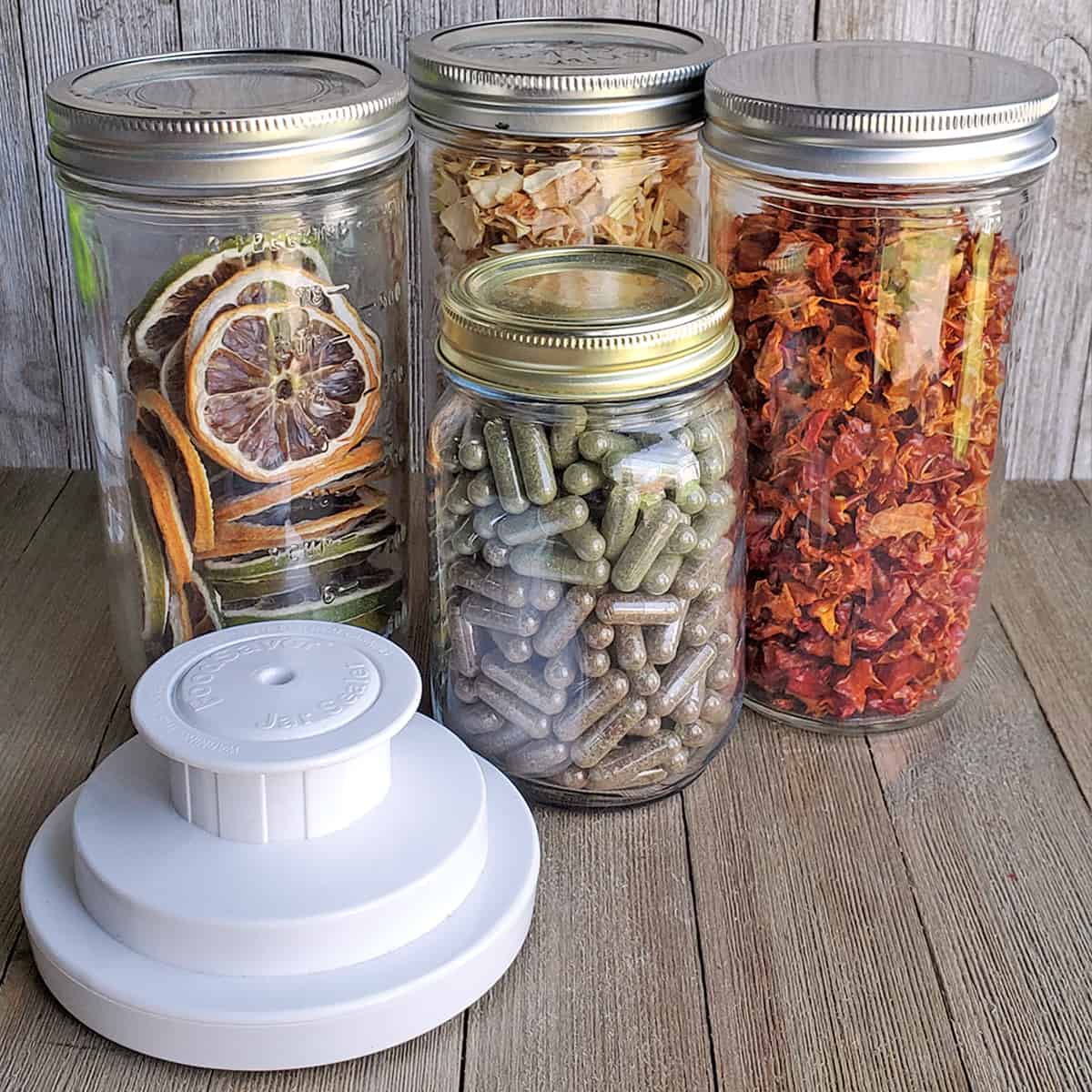
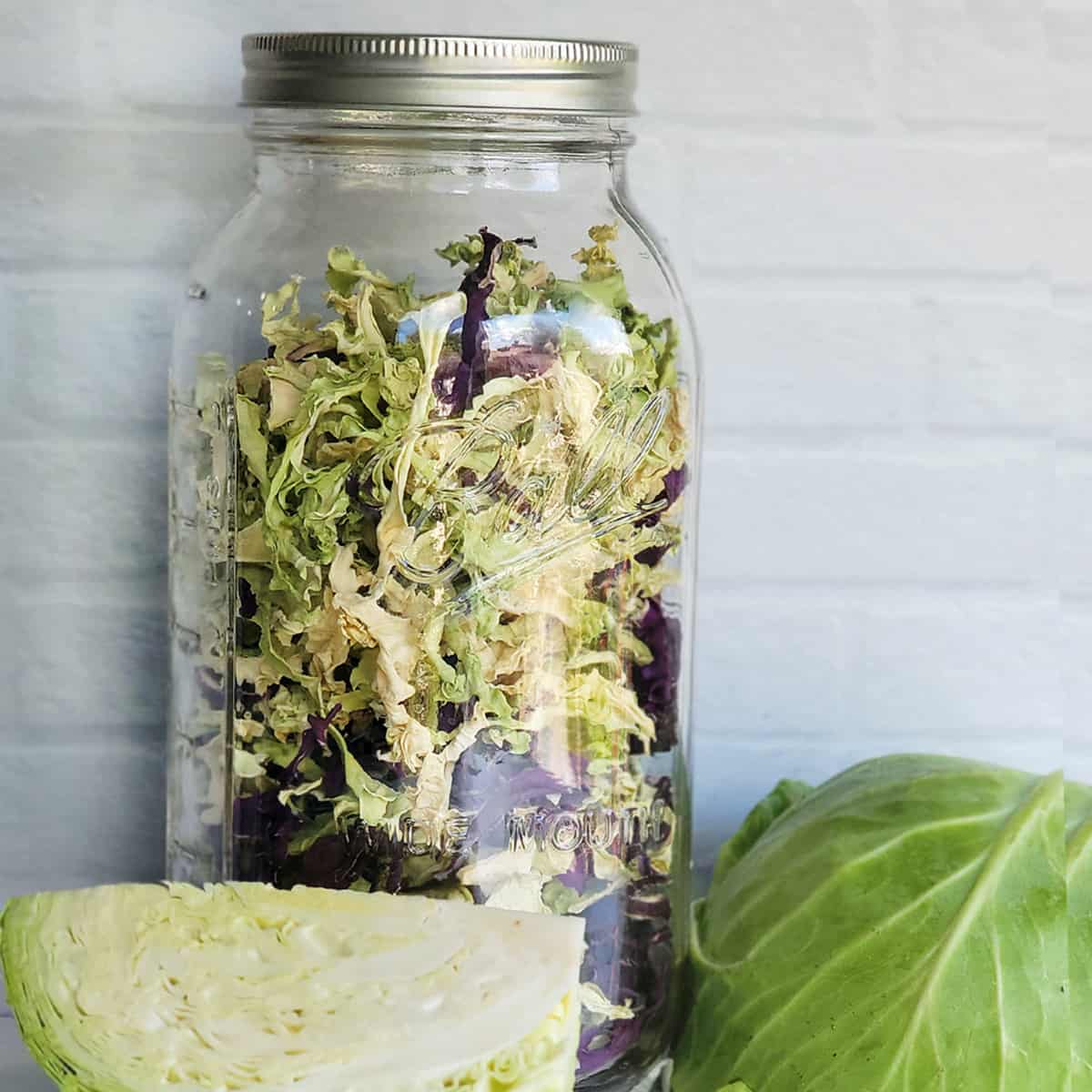
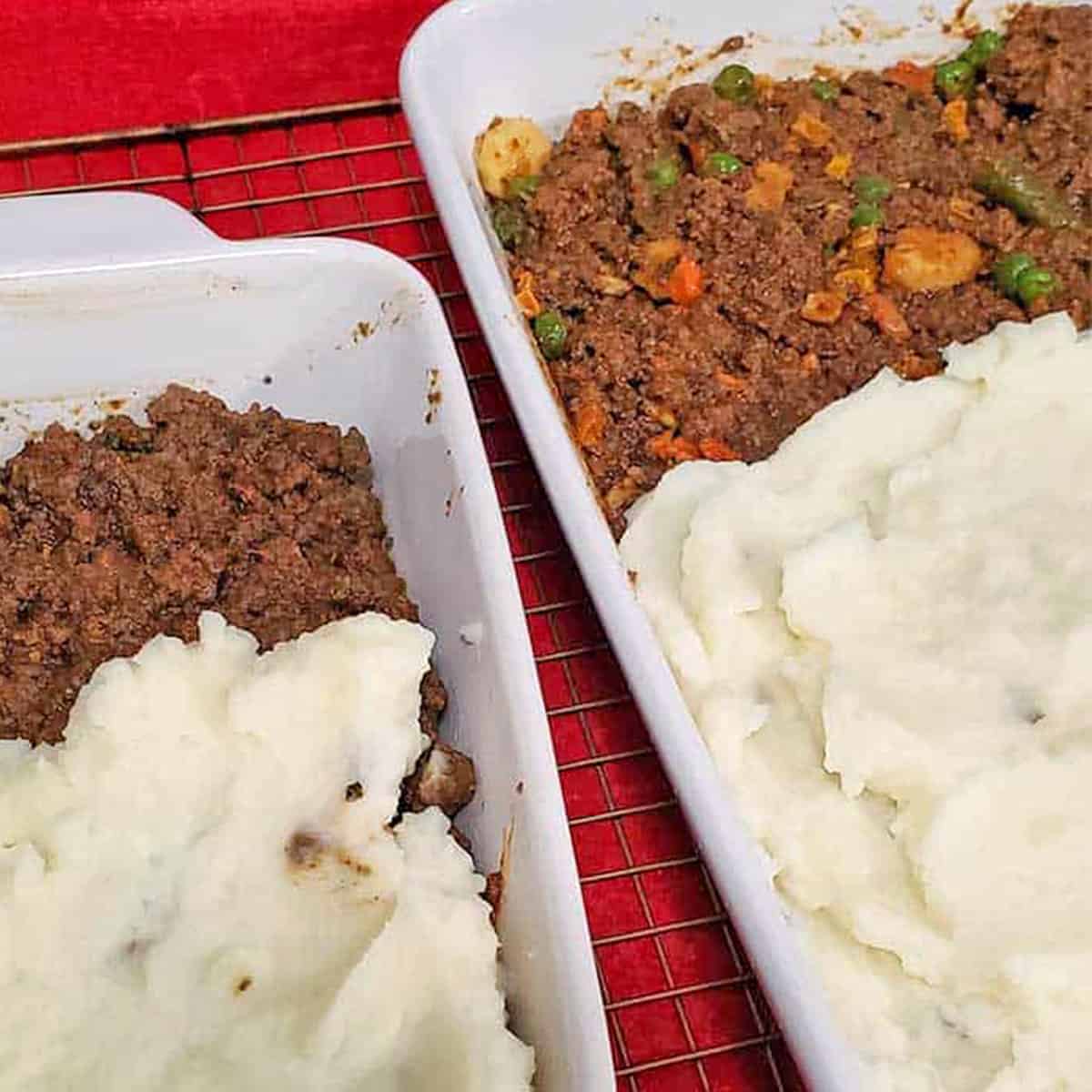


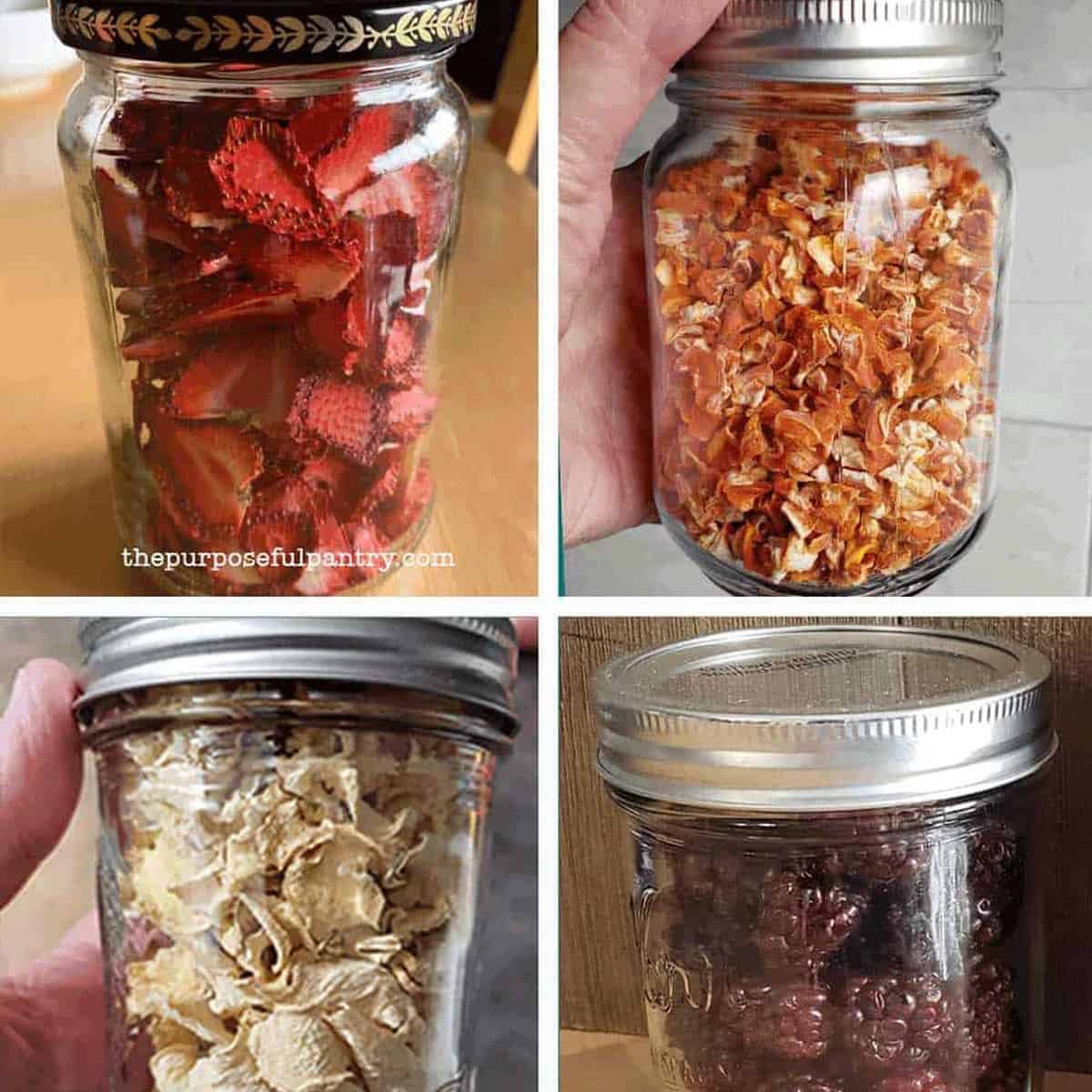
Hello!
Have you reviewed the food mill food dehydrator? How does it compare to excalibur and cosori?
Thanks!
THe Magic Mill? No, I haven’t, but from all the experience from the folks in our community, it’s a good machine and you’ll do fine with it.
I just bought a Brod and Taylor Sahara stainless steel folding dehydrator. Have you tested this one out? My Excaliber (5 tray) is too big for the cabinet it is in and wanted one that was narrower. Hope I didn’t make a mistake.
https://www.youtube.com/watch?v=O-CELBdOl-4&t=101s I love it! You’ll need to get the measurements from the company’s website for the size – it’s wider than an Excalibur, but not as deep.
Thanks for the helpful information. I’ve been drying for many years, but never had blanched fruits/vegetables. Nor did I know about “conditioning”. Lived in AZ so natural drying with low humidity helped me not have mold, but better science is better food.
Are you familiar with the Avantco 6 Tray Stainless Steel Food Dehydrator with Glass Door – 120V, 450W?
I saw this one when looking at the one you mentioned in your video. (The 1000W one) Considering it a smaller and a better price and completely stainless steel.
They are great machines. I understand that they do not offer warranties for people not in the restaurant business, so you’ll want to purchase a protection plan from them. 450 watts is less than the Cosori that I offer for $128.99 – so things will take longer to dry than any other 600 watt – but it will work fine. Just know that going into it and never go by the recommended time for something to dry.
Hi Darci,
I recently discovered your youtube channel. I love your discussions and how too’s. I purchased Excalibur 9 tray about 5 years ago with timer. Bought my second without timer the following year. I love my dryers and use them often. You have given me even more inspiration on items to dry and how to dry black berries and raspberry. I tried raspberry this year using parchment paper. I was not happy with results. Ended up with berries bursting and took a long time to dry the liquid. I will try again without parchment and hope for better results. Thank you
The parchment won’t affect your results, Coleen. Did you start with frozen raspberries or fresh? Parchment will actually help protect your machine for those things that are juicy. You can purchase some fruit leather sheets that are nonstick because even parchment sticks if it gets too wet. My fresh raspberries always end up paper dry – and aren’t good for snacking. I use them for powders.
Thank you Darcy 🙂
Great Information here and in your videos.
I have 9 tray Excalibur for few years now and love it.
For anyone else, A word of caution: STAY AWAY from SALTON (I had 2 and both had the same issue within the same time line).
The trays crack, warp, within 3-4 months of use on low temperature setting!
Besides that, the clear connecting plastic pieces trays are made of, break off! It can be choking hazard when dehydrating some foods (lemon slices for example, peppers, etc ), as the small pieces stick to the slices/pieces of foods. When all is dried , the clear plastic pieces are not noticeable! I can’t believe those dehydrators are still on the market!?
I’m sorry you had that experience with them.
Thank you for this review. I was debating whether to get a 5 or 9-tray Excalibur, and you and my health mentor concur that the 9 is a better investment. There is a great deal on Amazon through Woot! so I’m going to take it. Happy Birthday to me! 🙂
Happy birthday, indeed!
When I bought mine I wanted an Excalibur, but it was over my budget. I did my research and bought a Cosori Premium, 6 stainless trays, 600 watt, all stainless, no plastic, thermostat 95-165, timer and fan in rear. Very quiet. Had it about 18 months. I highly recommend it..
Thanks for sharing your experience!
Hello, Darcy,
In the section above titled CONSTRUCTION: Stainless vs Plastic, the last sentence appears to be incomplete. Is there more to this thought than what shows on my screen? I’m just wondering, as my machine is plastic.
Thanks, Martha! I should have done more than a last skim before publishing! I added the paragraph that I meant to include before.